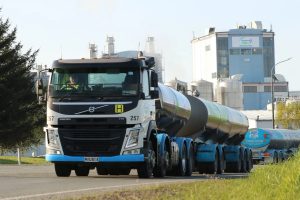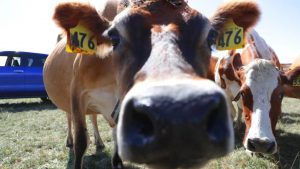
Dairy farmers are sharpening their pencils to protect their financial margins from soaring costs and a milk price that is showing some volatility.
Analysis by consultants AgFirst shows farm working expenses have risen 36% in just two years while in August Fonterra reduced its forecast payout by 25 cents following a string of negative GDT auction results.
It’s forecast midpoint is now $9.25/kg MS, down from $9.50/kg MS earlier in the season.
“So long as the payout is above $9/kgMS that will be fine, but it does mean a somewhat dark cloud on the horizon if the payout drops,” AgFirst economist Phil Journeaux said.
AgFirst’s annual Financial Survey in July calculated a 2022-23 break-even point of $8.48/kg/MS to cover farm working expenses, debt servicing, drawings, depreciation and tax.
It calculated that farm working expenses had increased $1.56/kg/MS between 2020-21 and 2022-23.
Compared to previous financial squeezes, dairy farmers are in a strong position having reduced total dairy sector debt by about $5 billion.
But dairy farm inflation in the year to June was 16.5%, more than twice the Consumer Price Index of 7.3%.
As a comparison, sheep and beef inflation in the year to March hit a 40-year high of 10.2%.
Ivan Lines of Agribusiness Consultants in Invercargill said costs and managing risk are the primary topic of conversation with his clients and he is adopting an approach last used when the dairy payout fell to $3.90/kg/MS.
Options include fertility testing individual paddocks to better manage application rates and mixes and culling early to reduce feed costs – but also looking to reduce business risk, such as ensuring a stable workforce.
The two items facing the largest expenditure costs in the next year are expected to be feed, which is projected to have increased 19% in recent months, and fertiliser, up 30%.
The size of some increases has been inflated as contracted price agreements expire.
Dairy farmers are also being warned to brace for electricity price rises of over 30% this season as supply contracts are renewed.
They could get higher as the electricity futures market forecasts an almost doubling in rates for the 2023 calendar year.
While encouraged by the recent 4.9% lift in GDT, Federated Farmers dairy chair Richard McIntyre said there is a need to hold or increase the forecast milk price.
If margins are squeezed further by a falling milk price or input costs remain the same or rise further, farmers will have to reduce spending, he said.
Economists have mixed views on the short-term milk price, but further out say there is little to fear in medium- and long-term supply and demand signals.
Milk production in the seven major dairy exporting regions is steady, and even falling on occasion.
But consumer dairy demand is growing and analysts’ forecast milk price for the current season ranges from $8.75/kg/MS to $10/kg/MS.
Westpac senior agri economist Nathan Penny said he believes dairy farmers will be compensated for rising structural costs and higher priced inputs because the long-term trend is towards lower milk supply.
“Demand is still steadily rising so lower milk production means higher prices and better margins, and we are seeing this around the world dairy exporting regions,” Penny said.
Rabobank senior agricultural analyst Emma Higgins expects the Big-7 milk pool to return to growth in Q4 2022 after five consecutive year-on-year quarters of decline.
ANZ agricultural economist Susan Kilsby has a more pessimistic outlook on world demand, citing volatility from global risks and uncertainty.
“The only certainty is that global risks remain high and therefore we can expect a high degree of volatility in the global dairy markets as market information and sentiments tips the scales in either direction,” Kilsby said.
























